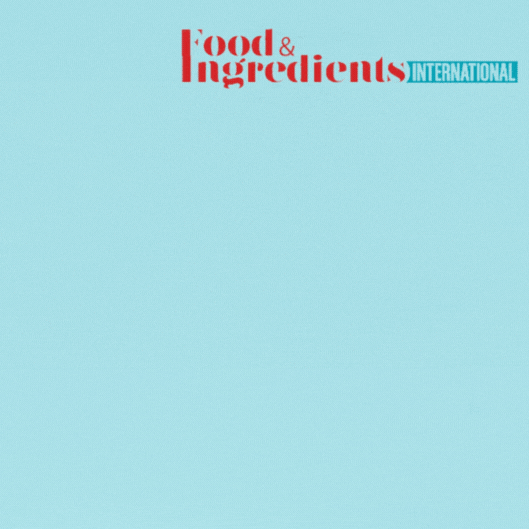The demand for dried fruits is increasing globally as they are a good source of fiber, vitamins, and minerals. They also provide a quick energy boost and can help with digestion. As people become more health conscious, they are increasingly turning to dried fruits as a healthier alternative to other snack foods. They are a convenient snack option as they are lightweight, easy to store, and have a longer shelf life than fresh fruits. They can also be eaten on the go, making them a popular choice for people with busy lifestyles. As more people adopt vegan and plant-based diets, dried fruits have become a popular snack option as they are a good source of plant-based protein and can help meet daily nutritional requirements. Health foods such as energy bars, protein bars, and granola can also compete with dried fruits as a healthier snack option.
- Dried berries (cranberries, cherries, blueberries, blackcurrant, strawberries, blackberry, raspberry, lingonberry, boysenberry, elderberry, huckleberry, red currant, etc.) account for the highest share, worth USD 6.05 billion, due to their tart and sweet flavor, versatility, nutritional value, longer shelf life, and availability to cross USD 8 Billion by 2028.
- Raisins account for 16.33% of the total, as they are commonly added to trail mix or granola, used as a topping for oatmeal or yogurt, or incorporated into baked goods such as cookies or bread.
- Online retail sales of dried fruits are expected to grow at a CAGR of 8.76% due to convenience, wide selection, competitive pricing, subscription services, and reviews and ratings.
- The increasing demand for organic dried fruits reflects a larger trend towards healthier and more sustainable food options and is likely to occupy 32.52% of the market in the future.
- Consumer preferences for healthy and nutritious snack options with dried fruits are expected to drive the future growth of snack applications at 7.53%.
Recent trends in the application of dried fruits are innovation, premiumization, flavor enhancement, plant-based foods, and functional foods. Dried cranberries are used in products marketed for urinary tract health, while prunes are used in products marketed for digestive health. Premium-dried fruits are becoming increasingly popular, particularly in the luxury snack market. Dried fruits are being used to add unique and exotic flavors to food products. For example, dried mangoes can be used to add a tropical flavor to cereals and baked goods, while dried figs can add a sweet and earthy flavor to salads and cheese plates.
The growth of the dried fruit market can be restrained by factors such as price, sugar content, allergies and intolerances, availability of fresh fruits, and quality control issues. Dried fruits are more expensive than other snack options, such as chips or cookies. Some dried fruits, such as cranberries and raisins, can have a high sugar content due to the drying process. Some people have allergies to nuts or fructose intolerance. Ensuring the consistent quality and freshness of dried fruits can be challenging, which can lead to consumer dissatisfaction and a loss of market share.
Over centuries, apples, mangoes, oranges, and pineapples were widely available in the world’s markets and enjoyed by people in their most juicy states when they were fresh. However, global warming, climatic uncertainties, decreasing farm sizes, and the overuse of pesticides have affected the quality and yield of these fresh fruits. This results in decreased shelf life, which creates opportunities to preserve them and store them for a longer period of time as dried fruits. The market for this segment was calculated to be USD 1940 Million in 2022 which is expected to grow with a higher CAGR by 2028.
As per the analysis, the market for dried dates is projected to add more than USD 900 Million market size from 2023 to 2028. Dates are native to the Middle East and North Africa, but they are now widely cultivated in many countries, including the United States, Israel, Saudi Arabia, and Iran. They are also used in traditional medicine and are believed to have many health benefits due to their high nutritional value. In addition to their popularity as a snack and cooking ingredient, dates are also used in religious and cultural celebrations, such as Ramadan in the Islamic tradition. Dates are increasingly being used as an alternative to sugar in a variety of dishes and snacks. Dried figs are witnessing substantial growth due to their rising utilization in breakfast cereals, bakery products, and packaged dried nut and fruit snacks.
Apricots are generally more expensive than other fruits as they’re more difficult to grow, erratic in nature, require more sprays to prevent disease, and are very difficult fruit to handle. Due to its high price points and lack of marketing as compared to other dried fruits, they hold a very small share of 5.86%. According to Bonafide Research, the market for dried prunes is anticipated to reach USD 1217.29 Million by 2028.
Dried fruits are widely available in most grocery stores and supermarkets, making them accessible to a larger audience. In addition, advances in technology have made it easier to produce, package, and distribute dried fruits, which has led to a wider variety of options for consumers. Specialty stores may have more unique or gourmet options, but they can also be more expensive and have a more limited selection. Hypermarkets and supermarkets account for 44.78% of the market, as they typically offer a wide range of products at competitive prices, making them a convenient and affordable option for consumers.
“Sales of dried fruits through other distribution channels like food service providers, farmers markets, health food stores, direct-toconsumer sales stores, and gift specialty stores are anticipated to grow at a CAGR of 8.33%.
Gifting dried fruits has become a popular trend recently due to their health and fitness benefits, long shelf life, versatility, variety, and sustainability” says, Mr. Dhwipal Shah, from Bonafide Research.
Consumers are becoming more conscious of their health and wellness and are seeking out natural and organic products that are free from harmful chemicals and pesticides.
Organic dried fruits are grown without the use of synthetic fertilizers or pesticides and are free from GMOs. Many companies have responded to the demand for organic products by expanding their product lines to include organic options or by switching to organic farming methods.
Dried fruits add nutritional value to snack foods as they are high in fiber, vitamins, and minerals.
Some companies are producing freeze-dried fruit snacks that are crispy and crunchy, while others are using dried fruits in savory snack products such as fruit and nut mixes. Additionally, dried fruits provide a natural and wholesome alternative to processed snacks and are a convenient and portable snack option. Dried fruits are being incorporated into new and innovative cereal products like granola cereals and muesli cereals that feature a combination of dried fruits, nuts, and grains.
Europe is the leading region in terms of revenue and consumption in the global dried fruits market valued at USD 5.81 Billion. Raisins, Apricots, Dates, Figs, and Cranberries are most commonly consumed in Europe either as a snack or used in baking & cooking. Other dried fruits that are consumed in Europe include prunes, apples, mangoes, and bananas. The growing trend of low-sugar, natural, and healthy food has been fueling the growth of the market for dried fruit in the region. The Netherlands is a major importer, exporter, and re-exporter of dried fruits, and the country is home to many large players in the dried fruit industry.
North American dried fruits market accounts for a 25.22% share due to increased dehydrated fruits adoption in various food sectors across the region. Raisins are one of the most popular varieties and other popular dried fruits include apricots, figs, dates, cranberries, and prunes. In recent years, there has also been growing demand for exotic dried fruits such as mangoes, pineapples, and papayas. Rising investments by processors for the research and development of innovative products may boost industry growth.
Asia Pacific is the fastest-growing region for this market at a CAGR of 8.01%. The increased availability, proper packaging and a growing awareness of health needs have stimulated the dried fruit market in the region. The expansion of the retail market and increased purchasing power in countries such as China and India are expected to stimulate demand further. Other than that, people consume dried fruits by mixing them into cereal, cheese, and yogurt. Furthermore, the regional market is expected to gain ground in the coming years due to the health benefits of consumers when consuming dried fruits due to their high phytochemical content.
The Middle East & Africa region is one of the important markets, attributed to the highest production and exports of dehydrated fruits from Iran, Afghanistan, and Turkey. The rising demand for dried grapes, dates, and dried apricots from developed regions of Europe and North America for their further processing into value-added products such as healthy baked goods, confectionery, and snacks is further driving the market growth in the region. Moreover, the rising interest in dried nut and fruit snacks and bakery products among young adults in the Middle East and Africa contributes to the region’s market growth.
The demand for dried fruits in South America is the lowest with a 3.33% share globally and is primarily driven by Brazil, which is the largest market in the region. The South American market is still at the nascent stage and poses tremendous opportunities for leading regions such as Europe and the Middle East to invest in this market. The growing awareness among consumers regarding functional foods and healthy snacking is expected to fuel market growth in the upcoming years at a CAGR of 6.59%.


















